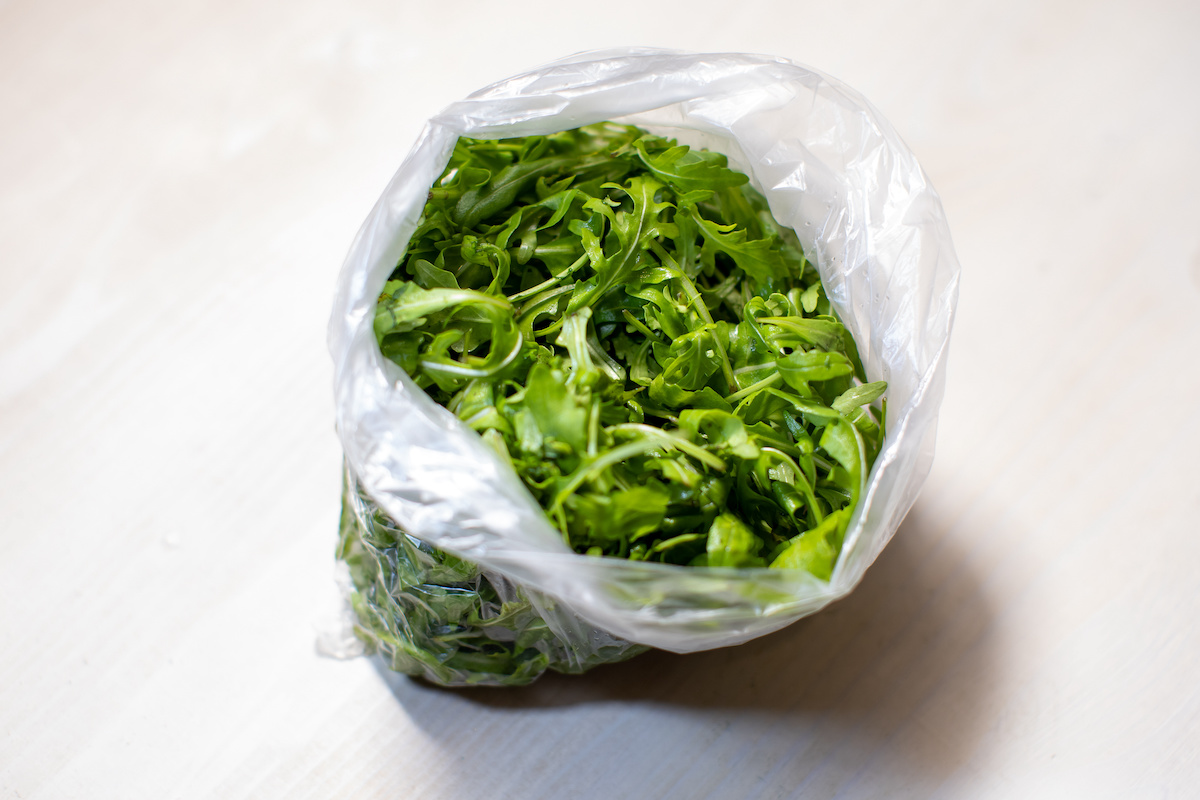

Articles
How To Store Rosemary In Fridge
Modified: January 19, 2024
Learn the best method for storing rosemary in the fridge to keep it fresh and flavorful for longer. Read our informative articles on how to properly store herbs.
(Many of the links in this article redirect to a specific reviewed product. Your purchase of these products through affiliate links helps to generate commission for Storables.com, at no extra cost. Learn more)
Introduction
Rosemary is a popular herb known for its aromatic fragrance and culinary versatility. Whether you grow your own fresh rosemary or purchase it from the store, proper storage is essential to preserve its flavor and aroma for extended periods. While there are various methods to store rosemary, keeping it in the fridge is one of the most effective ways to maintain its freshness.
In this article, we will explore the reasons why storing rosemary in the fridge is beneficial, along with different methods that you can use to store it. Additionally, we will provide some handy tips to ensure that your rosemary stays fresh and flavorful for as long as possible.
So, if you’re ready to discover how to keep your rosemary sprigs vibrant and fragrant, let’s delve into the world of fridge storage!
Key Takeaways:
- Storing rosemary in the fridge extends its shelf life, preserves its aroma, and provides convenient access for enhancing culinary creations with fresh, flavorful herb.
- Preparing rosemary for fridge storage involves harvesting, cleaning, and drying the sprigs, followed by choosing a suitable storage method to maintain optimal freshness.
Read more: How To Store Rosemary
Why Store Rosemary in the Fridge
Storing rosemary in the fridge offers several advantages that aid in preserving its freshness and flavor. Here are a few key reasons why it’s beneficial to store rosemary in the refrigerator:
- Extended Shelf Life: Rosemary is a delicate herb that tends to wilt and lose its flavor quickly when exposed to air and higher temperatures. By storing it in the fridge, you can extend its shelf life and enjoy the flavor of fresh rosemary for a longer period.
- Preserves Aroma: The cool temperature of the fridge helps to retain the aromatic oils within the rosemary leaves. This preservation of aroma is crucial for enhancing the flavor of your dishes when using rosemary as a culinary herb.
- Minimizes Moisture Loss: Rosemary is susceptible to moisture loss, which can cause the leaves to become dry and brittle. Storing it in the fridge helps to create a more humid environment, preventing excessive moisture loss and keeping the herb fresh.
- Reduced Decay and Mold: Refrigeration slows down the growth of bacteria and mold, minimizing the chances of decay and spoilage. This helps to maintain the quality of the rosemary and prevents it from becoming slimy or molding prematurely.
- Convenient Access: Storing rosemary in the fridge ensures that it is readily available whenever you need it. You can simply open the fridge and grab a sprig of fresh rosemary to add flavor to your dishes, making your cooking experience more convenient.
By understanding the benefits of storing rosemary in the fridge, you can ensure that you always have fresh and aromatic rosemary on hand to enhance the taste of your favorite recipes.
Preparing Rosemary for Storage
Before you store rosemary in the fridge, it is important to properly prepare the herb to ensure maximum freshness and longevity. Follow these steps to prepare your rosemary for storage:
- Harvest and Clean: If you are using fresh rosemary from your garden or purchasing it from a store, harvest the sprigs you intend to store. Gently shake off any dirt or debris and give the sprigs a thorough rinse under cool water to remove any remaining dirt or insects. Pat the rosemary dry with a paper towel.
- Trim the Stems: Use a sharp pair of kitchen scissors or pruning shears to trim off any excess stems, ensuring that you are left with just the fresh rosemary leaves. Removing excess stems not only helps to conserve space but also encourages better airflow, reducing the risk of moisture buildup.
- Inspect for Discoloration: Check the rosemary sprigs for any discolored or wilted leaves. Remove any damaged or browned leaves, as they can accelerate the spoiling process.
- Let It Dry: Allow the rosemary sprigs to air dry completely before storing to prevent excess moisture. Place them on a clean kitchen towel or paper towel and let them sit in a well-ventilated area for a few hours until they are dry to the touch.
By following these steps, you will ensure that your rosemary is in optimal condition for storage, maximizing its freshness and flavor.
Different Methods to Store Rosemary in the Fridge
There are several methods you can use to store rosemary in the fridge, depending on your preference and the availability of supplies. Here are four common methods you can try:
- Method 1: Plastic Bag with Paper Towel: This is a simple and effective method for storing rosemary. Place the fresh rosemary sprigs in a plastic bag and insert a slightly damp paper towel to provide a humid environment. Seal the bag and store it in the fridge. This method helps retain moisture and freshness.
- Method 2: Glass Jar with Water: Fill a glass jar with an inch or two of water and place the rosemary sprigs in it, similar to a bouquet of flowers. Cover the jar loosely with a plastic bag, securing it with a rubber band. Keep the jar in the fridge, changing the water every few days to maintain freshness.
- Method 3: Vacuum-Sealed Bags: If you have a vacuum sealer, this method can help prolong the shelf life of rosemary. Place the rosemary sprigs in a vacuum-sealed bag and use the vacuum sealer to remove the air. It creates an airtight environment that preserves the rosemary’s freshness for a longer duration.
- Method 4: Freezing Rosemary: Freezing is an excellent way to store rosemary for an extended period. Strip the rosemary leaves off the stems and chop them finely if desired. Place the leaves in an ice cube tray, fill each cube with water or olive oil, and freeze. Once frozen, transfer the cubes to a Ziploc bag and store in the freezer. You can easily take out a cube whenever you need rosemary for cooking.
Choose the method that suits your needs and the quantity of rosemary you want to store. Experiment with different methods to find the one that works best for preserving the freshness and flavor of your rosemary.
Method 1: Plastic Bag with Paper Towel
Storing rosemary in a plastic bag with a paper towel is a simple and effective method that helps to retain the herb’s freshness and moisture. Follow these steps to store rosemary using this method:
- Gather the fresh rosemary sprigs that you wish to store. Remove any excess stems and damaged leaves.
- Take a paper towel and dampen it slightly with water. Make sure it is not soaking wet, just slightly moist.
- Place the damp paper towel inside a plastic bag. The towel will serve as a source of humidity, creating an optimal environment for the rosemary.
- Put the rosemary sprigs into the plastic bag. Arrange them in a single layer, if possible, to prevent crushing or bruising of the leaves.
- Seal the plastic bag, making sure it is airtight. This will help to maintain the moisture and prevent the herb from drying out.
- Label the bag with the date of storage to keep track of its freshness.
- Store the rosemary-filled plastic bag in the fridge. Place it in a location where it won’t get crushed or jostled around.
- Check the rosemary periodically and remove any wilted or spoiled sprigs to prevent them from affecting the rest of the herb.
- When you need to use rosemary, simply remove a sprig from the bag, rinse it if necessary, and pat it dry before using it in your recipes.
This method provides a humid environment that helps to maintain the moisture content and flavor of the rosemary. It is a convenient way to store and access the herb for an extended period, ensuring that you always have fresh rosemary on hand for your culinary creations.
To store rosemary in the fridge, first wrap the stems in a damp paper towel and place them in a plastic bag. Keep the bag slightly open to allow for air circulation. This will help keep the rosemary fresh for up to two weeks.
Read more: How To Store Dried Rosemary
Method 2: Glass Jar with Water
Storing rosemary in a glass jar with water is an excellent way to keep the herb fresh and vibrant for an extended period. Follow these steps to store rosemary using this method:
- Select a clean glass jar that is large enough to accommodate your rosemary sprigs. It should have a narrow opening to help support the sprigs upright.
- Fill the glass jar with about an inch or two of water. The water level should be enough to submerge the bottom of the rosemary sprigs without covering the leaves.
- Take the rosemary sprigs and trim off any excess stems, leaving only the fresh green leaves.
- Place the trimmed rosemary sprigs in the glass jar, arranging them in an upright position like a bouquet of flowers.
- Loosely cover the top of the jar with a plastic bag, securing it in place with a rubber band. This will help create a humid environment and prevent excess moisture loss.
- Label the jar with the date of storage to keep track of freshness.
- Store the jar in the refrigerator, making sure it is placed upright and in a stable position to prevent it from tipping over.
- Check the water level in the jar every few days and replenish it as needed to ensure that the rosemary stems remain submerged.
- Inspect the rosemary sprigs regularly and remove any wilted or discolored leaves to maintain the quality of the herb.
- When you need to use rosemary, simply remove a sprig from the jar, rinse it if necessary, and pat it dry before incorporating it into your recipes.
This storage method provides a humid environment that helps to keep the rosemary fresh and preserve its flavor and aroma. The glass jar with water acts as a natural vase for the herb, prolonging its shelf life and making it easily accessible whenever you need it.
Method 3: Vacuum-sealed Bags
Vacuum-sealing rosemary is an effective method for prolonging its shelf life and preserving its freshness. Here’s how you can use vacuum-sealed bags to store rosemary:
- Take the fresh rosemary sprigs that you want to store. Trim off any excess stems and damaged leaves.
- Prepare a vacuum-sealed bag that is large enough to accommodate the rosemary sprigs. Alternatively, you can use a vacuum-sealer container specifically designed for storing herbs.
- Place the rosemary sprigs inside the bag, arranging them in a single layer to prevent them from getting crushed.
- Seal the bag according to the instructions provided with your vacuum sealer. Make sure the bag is tightly sealed to remove as much air as possible from the bag.
- Label the bag with the date of storage to keep track of its freshness.
- Store the vacuum-sealed bag in the refrigerator, ensuring that it is placed in a location where it won’t get crushed or damaged.
- When you need to use rosemary, simply open the vacuum-sealed bag, take out the desired amount, and reseal the bag for future use.
- After each use, squeeze out any excess air from the bag before sealing it to maintain the freshness of the remaining rosemary.
- Periodically check the sealed bag to ensure that there is no air leakage. If you notice any air inside the bag, reseal it properly using your vacuum sealer.
- Discard any rosemary sprigs that show signs of spoilage or have lost their freshness.
Vacuum-sealing removes air from the bag, creating an airtight environment that helps preserve the flavor, aroma, and texture of the rosemary. This method allows you to enjoy the freshness of your rosemary for an extended period, making it a great option for long-term storage.
Method 4: Freezing Rosemary
Freezing rosemary is a fantastic method to store the herb for an extended period while still maintaining its flavor and aroma. Follow these steps to freeze rosemary:
- Harvest the fresh rosemary sprigs and remove any excess stems. Give them a gentle rinse to remove any dirt or debris.
- Pat the rosemary sprigs dry using a paper towel to remove excess moisture.
- Strip the rosemary leaves off the stems. You can leave them whole or chop them finely, depending on your preference.
- Prepare an ice cube tray by lightly greasing it with olive oil or non-stick spray.
- Fill each ice cube compartment with the prepared rosemary leaves. You can either fill them with plain rosemary leaves or mix them with a little olive oil or water.
- Place the ice cube tray in the freezer and let the rosemary freeze completely. This typically takes a few hours.
- Once the rosemary cubes are completely frozen, remove them from the ice cube tray and transfer them to a labeled Ziploc bag.
- Squeeze out any excess air from the bag before sealing it to prevent freezer burn.
- Label the bag with the date of freezing to keep track of its freshness.
- Store the bag of frozen rosemary cubes in the freezer until ready to use.
- When you need to use rosemary, simply remove a frozen cube or two from the bag and add it directly to your recipes. There’s no need to thaw the rosemary cubes beforehand.
- After each use, reseal the bag tightly and return it to the freezer for future use.
Freezing rosemary allows you to have the herb readily available whenever you need it. The frozen rosemary cubes can be easily added to dishes while cooking, ensuring that you can enjoy the flavor of fresh rosemary throughout the year.
Tips for Storing Rosemary in the Fridge
To maximize the freshness and flavor of rosemary when storing it in the fridge, consider the following tips:
- Use Fresh Rosemary: Start with fresh rosemary sprigs for the best results. The fresher the rosemary, the longer it will retain its flavor and aroma.
- Store Unwashed: It’s best to store rosemary in the fridge without washing it beforehand. Washing the herb can introduce excess moisture and potentially cause premature spoiling.
- Remove Excess Moisture: Before storage, make sure to pat the rosemary sprigs dry with a paper towel to remove any excess moisture. Excess moisture can promote spoilage.
- Store in airtight containers: Whether you choose to use plastic bags, glass jars, or vacuum-sealed bags, ensure that they are sealed tightly to prevent the entry of air, which can lead to accelerated spoilage.
- Label and Date: Always label the storage containers with the date to keep track of freshness. This will help you identify the older rosemary and use it first.
- Check and Remove Wilted Sprigs: Regularly inspect the stored rosemary for any wilting or discolored sprigs. Remove them promptly to prevent them from affecting the rest of the herb.
- Use a Refrigerator Drawer: If possible, store your rosemary in a refrigerator drawer specifically designed for storing herbs. This will help maintain a consistent temperature and prevent crushing or damage.
- Don’t Overcrowd: Avoid overcrowding the storage container or bag to allow proper airflow. Overcrowding can lead to excess moisture buildup and spoilage.
- Keep Away from Moisture: Ensure that the rosemary does not come into direct contact with moisture in the fridge. Excess moisture can cause the herb to become slimy and spoil quickly.
- Utilize Freezing for Long-term Storage: If you want to store rosemary for an extended period, consider freezing it using the ice cube tray method. Frozen rosemary cubes can be easily retrieved whenever needed.
By following these tips, you can ensure that your stored rosemary stays fresh, flavorful, and ready to enhance your culinary creations for an extended period.
Read more: How To Store Fresh Rosemary
Conclusion
Storing rosemary in the fridge is a practical and effective way to maintain its freshness, flavor, and aroma for extended periods. Whether you grow your own rosemary or purchase it from the store, proper storage techniques can help you enjoy the herb’s culinary benefits for weeks or even months.
In this article, we have explored various methods to store rosemary in the fridge, including using a plastic bag with a paper towel, a glass jar with water, vacuum-sealed bags, and freezing rosemary in ice cubes. Each method provides unique benefits and options depending on your preferences and storage needs.
By properly preparing rosemary for storage, such as harvesting, cleaning, and drying it thoroughly, you can ensure optimal conditions for preservation. It is crucial to use fresh rosemary and avoid washing it before storing to minimize excess moisture.
Remember to label and date your storage containers to keep track of freshness and regularly inspect the rosemary for any wilted or spoiled sprigs. Removing these promptly will prevent them from affecting the quality of the rest of the herb.
With the tips and methods discussed in this article, you can confidently store your rosemary in the fridge, maintaining its vibrant green color, rich aroma, and potent flavor. Whether you are using rosemary as a culinary herb or for its medicinal properties, proper storage will ensure that you have access to its goodness whenever you need it.
So, go ahead and start implementing these techniques to store your rosemary in the fridge, and elevate the taste of your dishes with the fresh flavors of this aromatic herb!
Frequently Asked Questions about How To Store Rosemary In Fridge
Was this page helpful?
At Storables.com, we guarantee accurate and reliable information. Our content, validated by Expert Board Contributors, is crafted following stringent Editorial Policies. We're committed to providing you with well-researched, expert-backed insights for all your informational needs.














0 thoughts on “How To Store Rosemary In Fridge”